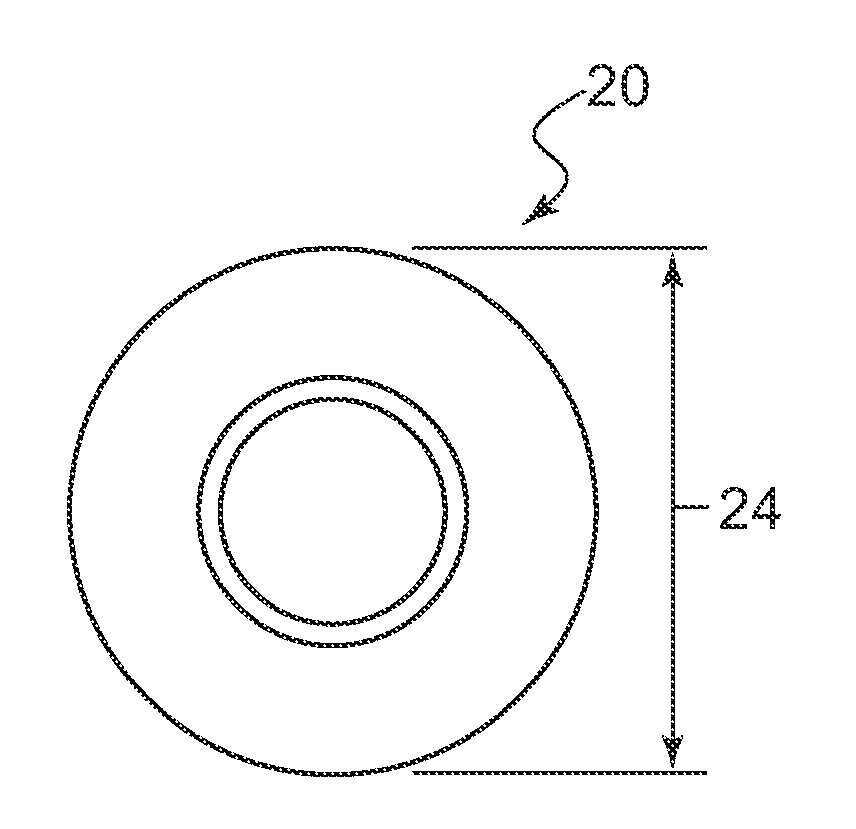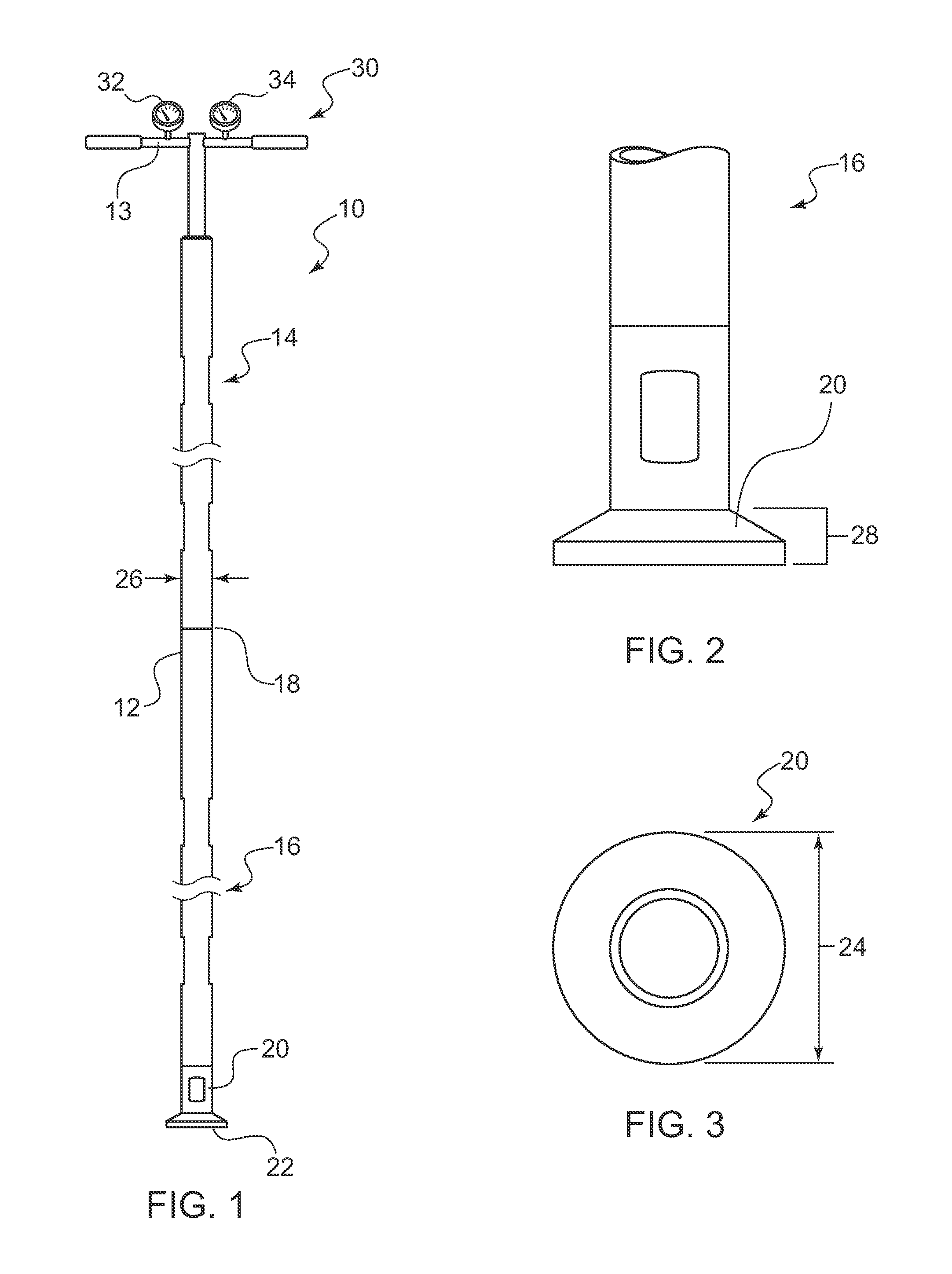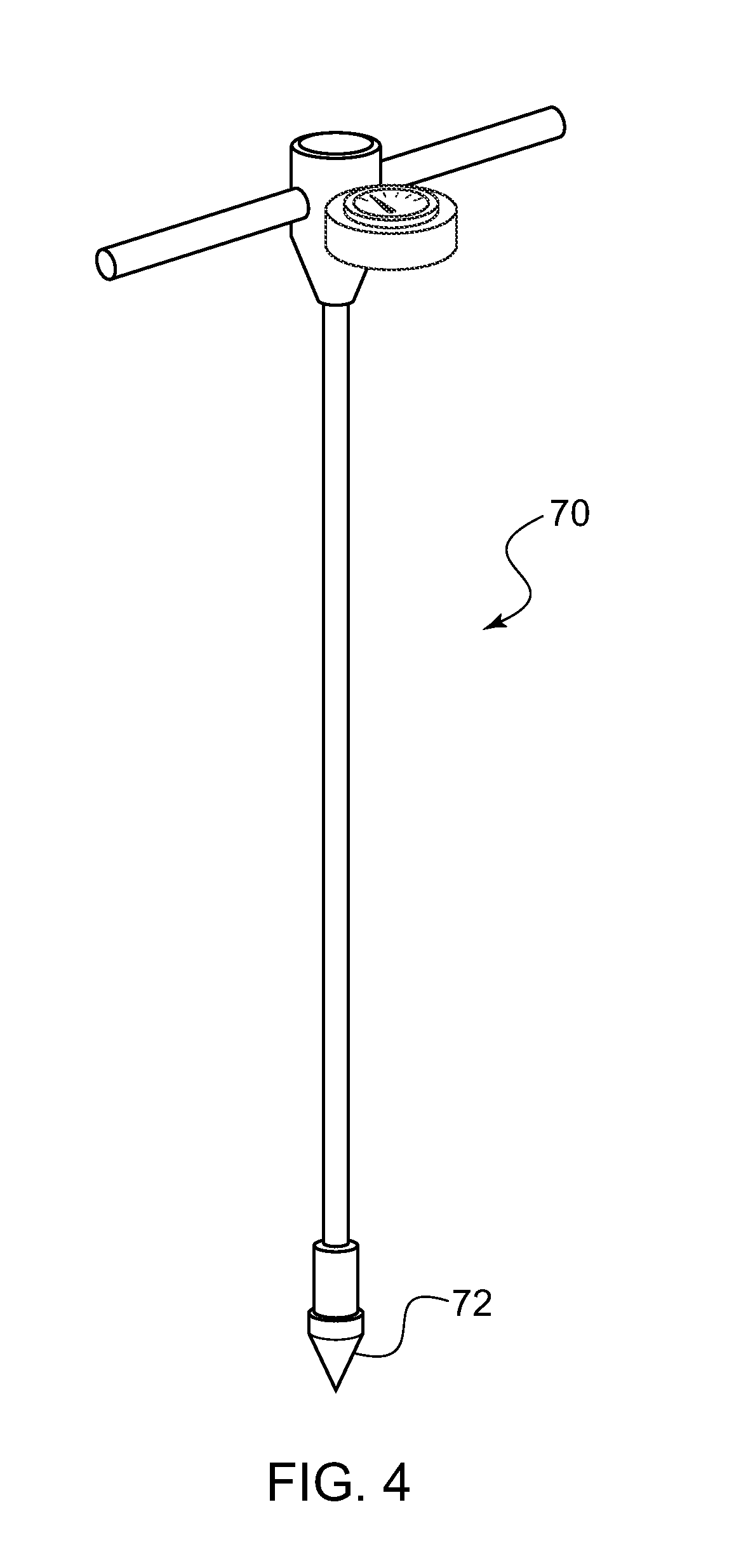Field Strength Test Devices and Methods for Installed Engineered Material Arresting Systems
a technology of installed engineered materials and testing devices, which is applied in the direction of simultaneous indication of multiple variables, ways, instruments, etc., can solve the problems of unreliable transport of one or more portions of the material back to the laboratory for testing, inability to directly apply the patented in-house test method to the field strength testing of installed emas systems, and inability to use the associated runway for an extended period
- Summary
- Abstract
- Description
- Claims
- Application Information
AI Technical Summary
Benefits of technology
Problems solved by technology
Method used
Image
Examples
Embodiment Construction
[0014]As shown in FIG. 1, one embodiment of a portable field testing device 10 includes a shaft 12, a punch head 20, and a measurement system 30. For increased portability, the shaft 12 may (but need not) be divided into two or more sections and assembled on-site. In the specific example shown in FIG. 1, shaft 12 is provided in two parts, an upper shaft 14 and a lower shaft 16, that can be quickly assembled in the field but provide for easy transportation. It should be understood, however, that a single shaft or any number of shaft sections may be provided. As also shown in the specific embodiment of FIG. 1, the upper and lower shaft portions 14, 16, may be connected via a threaded connection 18. Again, it should be understood that any number of appropriate connections may be used and are considered within the scope of this invention, such as snap fit connections, j lock / tab connections, dovetail connections, tapered connections, and so forth.
[0015]In a specific embodiment, the punc...
PUM
| Property | Measurement | Unit |
|---|---|---|
| length | aaaaa | aaaaa |
| penetration depth | aaaaa | aaaaa |
| diameters | aaaaa | aaaaa |
Abstract
Description
Claims
Application Information
 Login to View More
Login to View More - R&D
- Intellectual Property
- Life Sciences
- Materials
- Tech Scout
- Unparalleled Data Quality
- Higher Quality Content
- 60% Fewer Hallucinations
Browse by: Latest US Patents, China's latest patents, Technical Efficacy Thesaurus, Application Domain, Technology Topic, Popular Technical Reports.
© 2025 PatSnap. All rights reserved.Legal|Privacy policy|Modern Slavery Act Transparency Statement|Sitemap|About US| Contact US: help@patsnap.com



